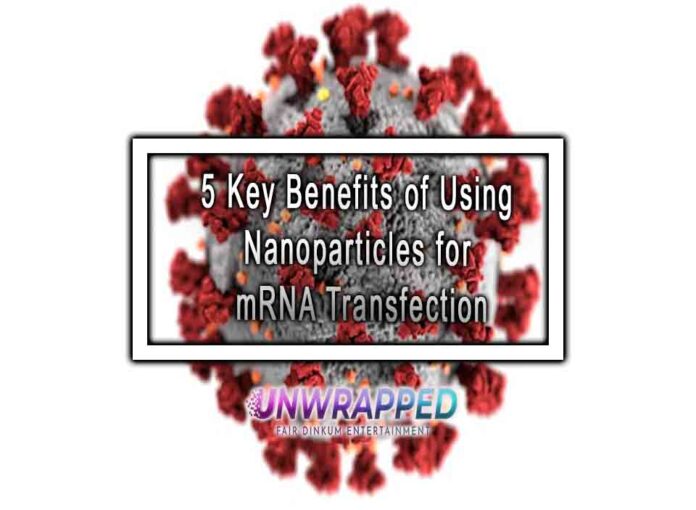In recent years, the field of nanomedicine has revolutionized the way we approach drug delivery and gene therapy. One of the most promising applications of nanoparticles is in mRNA transfection, particularly highlighted by its pivotal role in enabling COVID-19 mRNA vaccines. This blog explores the significant advantages of utilizing nanoparticles for mRNA transfection, delving into how these tiny carriers enhance therapeutic efficacy and delivery precision.
Nanoparticles have emerged as essential tools in modern medicine, particularly in the realm of mRNA transfection. Their ability to encapsulate and deliver mRNA molecules efficiently into target cells has opened new avenues for vaccine development and gene therapy. This article explores five key benefits of nanoparticles in mRNA transfection, showcasing their transformative potential in advancing medical treatments.
For more insights into the transformative potential of nanoparticles in mrna, visit Power of Particles.
1. Enhanced Stability and Protection
Nanoparticles offer a crucial advantage in stabilizing mRNA molecules during delivery. mRNA is inherently fragile and susceptible to degradation by nucleases in the extracellular environment.
By encapsulating mRNA within nanoparticles, such as lipid nanoparticles (LNPs) or polymeric nanoparticles, researchers can shield these molecules from enzymatic degradation. This protection ensures that mRNA remains intact and functional until it reaches the target cells, thereby enhancing the overall efficiency of transfection.
2. Improved Cellular Uptake
One of the primary challenges in mRNA therapy is achieving efficient cellular uptake. Naked mRNA molecules face barriers in crossing cellular membranes due to their large size and negative charge. Nanoparticles, however, facilitate cellular uptake through various mechanisms.
They can fuse with cell membranes, undergo endocytosis, or directly penetrate cell membranes, depending on their composition and surface modifications. This enhanced cellular uptake ensures that a higher percentage of mRNA reaches the cytoplasm, where it can undergo translation into therapeutic proteins.
3. Targeted Delivery to Specific Cells
A significant advantage of nanoparticles is their ability to achieve targeted delivery of mRNA to specific cells or tissues. This targeted approach minimizes off-target effects and enhances therapeutic outcomes. Nanoparticles can be engineered to recognize and bind to specific cell surface receptors or markers, enabling precise delivery to desired locations within the body.
For example, in cancer therapy, nanoparticles can be designed to target tumor cells selectively, delivering therapeutic mRNA payloads directly to the cancerous tissue while sparing healthy cells.
4. Prolonged Circulation Time
Another benefit of nanoparticles is their ability to prolong the circulation time of mRNA molecules in the bloodstream. When administered systemically, naked mRNA is quickly cleared by the immune system or filtered out by the kidneys, limiting its therapeutic window. Encapsulation within nanoparticles protects mRNA from enzymatic degradation and immune recognition, allowing it to circulate in the bloodstream for extended periods.
This prolonged circulation enhances the likelihood of mRNA reaching its intended targets, increasing the overall efficacy of therapeutic interventions.
5. Reduced Immunogenicity
Naked mRNA molecules can trigger immune responses, leading to inflammation or neutralization by antibodies. Nanoparticles can mitigate these immunogenic effects by serving as a shield around mRNA molecules. The nanoparticle surface can be modified to reduce recognition by immune cells or to promote immune tolerance, thereby minimizing adverse reactions.
This property is particularly critical in vaccine development, where the goal is to induce a specific immune response against a pathogen without causing excessive inflammation or adverse side effects.
FAQs about Nanoparticles in mRNA Transfection
How do nanoparticles protect mRNA during delivery?
Nanoparticles encapsulate mRNA molecules, shielding them from enzymatic degradation by nucleases in the extracellular environment. This protection ensures that mRNA remains stable and functional until it reaches the target cells for transfection.
What types of nanoparticles are commonly used for mRNA transfection?
Commonly used nanoparticles include lipid nanoparticles (LNPs), polymeric nanoparticles, and hybrid nanoparticles. Each type offers unique advantages in terms of stability, cellular uptake, and targeted delivery of mRNA payloads.
Can nanoparticles be tailored to target specific cells or tissues?
Yes, nanoparticles can be engineered with surface modifications that allow them to recognize and bind to specific cell surface receptors or markers. This capability enables targeted delivery of mRNA to desired cells or tissues, minimizing off-target effects.
Do nanoparticles pose any safety concerns in mRNA therapy?
The safety profile of nanoparticles in mRNA therapy is carefully evaluated during preclinical and clinical studies. Researchers focus on optimizing nanoparticle design to minimize potential toxicity and enhance therapeutic efficacy.
Conclusion
Nanoparticles represent a groundbreaking technology in mRNA transfection, offering unparalleled advantages in stability, cellular uptake, targeted delivery, circulation time, and immunogenicity. These benefits have propelled the development of mRNA-based vaccines and therapies, paving the way for innovative approaches in treating diseases ranging from cancer to infectious diseases. As research continues to advance, nanoparticles hold tremendous promise in shaping the future of precision medicine and personalized therapies.










